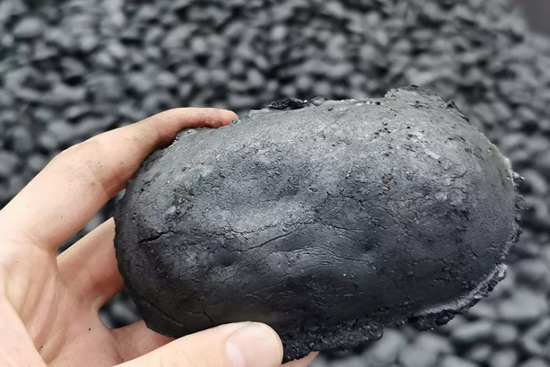
When anthracite is available in an appropriate form, it can be used as an electrode binder. A typical electrode carbon paste is made from a mix of calcined petroleum coke (CPC) and/or electrically calcined anthracite coal impregnated with selective Coal Tar Pitch binding at a specified temperature.
The quality of the interfaces between the filler and binder that form during the molding process is a major influencer of paste quality. This quality is affected by many factors such as the type of raw material and the conditions of processing. The present work was undertaken with the objective of identifying the raw materials and process variables which have a significant influence on the nature of the binder-filler interfaces in commercially-produced electrode carbons. This study suggests that interface characteristics are less affected by the binder pitches used in electrode carbons than previously believed. This study also revealed that the coal particle size and type had an impact on the interface quality.

By scanning electron microscope, etched surfaces of electrode carbons are able to be evaluated for the quality of their filler-pitch interfacing. This etched feature is characteristic of the interfacial breakdown and under specific conditions can be quantified. In the density of electrodes it is possible to determine the quality of filler-pitch contacts. This is related both to the tensile and electrical resistance of the electrodes. In the present work, a range of commercially-produced electrode carbons was examined with the aim of demonstrating the variability in interface quality and identifying the raw materials associated with inferior quality interface bonding. The apparent densities, tensile strengths, electrical resistivities and pore structural parameters of the electrodes were measured using standard techniques.
Raman spectroscopy, XRF and other techniques were used to analyze the interfaces. X-ray diffraction showed that the graphite lattice of all the calcined anthracite samples studied displayed a clear diffraction pattern corresponding to the crystalline structure of the underlying coal. Contrastingly, a commercial sample of hard carbon (HC), a standard for analyzing diffraction patterns, showed a broad peak. It indicated a more disordered graphite in the HC sample compared to the calcined ash.
Raman spectra for calcined HC and anthracite showed that the calcined samples all exhibited a strong signal in the region II. This region represents Na-ion interaction between the graphene layer of the crystallized phase. However, HC exhibited a significantly wider region III. It is likely that a greater amount of Na ions were intercalated between the graphene layers of the crystalline phase.
Table 5 shows the IQI value of electrodes manufactured with different filler cokes. Except for the anomalous value obtained from filler-coke C3, the IQI does not vary in a systematic way with different fillers. In the case of the electro-calcined anthracite, there is a greater correlation between the IQI and the particle size distribution than for the petroleum cokes.

Write a Message